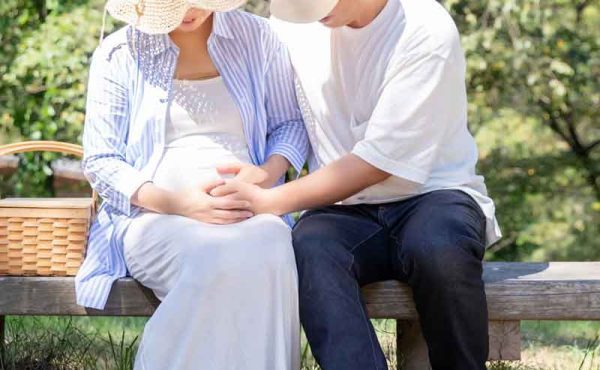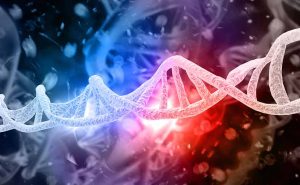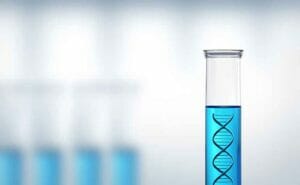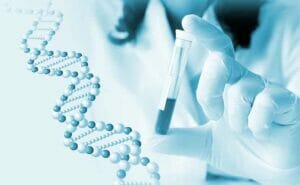Explore the latest insights on childbirth at an older age, disability risks, and Down syndrome risks at Hiro Clinic. Our content is supervised by doctors to provide up-to-date information and effective countermeasures.
- At what age is old enough to have a baby? Current situation in recent years
- 【By age】Risks and measures for older pregnancies and births
- Facts about very old pregnancies and births
- Find out about Down syndrome
- Summary
At what age is old enough to have a baby? Current situation in recent years
Basically, it is considered to be after the age of 35 that a woman gives birth at an older age, but did you know that in recent years there has been an increase in the number of women giving birth at an older age? The definition of older childbirth is not clear, but the Japanese Society of Obstetrics and Gynaecology calls first-time mothers aged 35 or older ‘older first-time mothers’.
The number of cases of older women giving birth at the age of 35 and over has been increasing year by year, with research showing that approximately 30% of babies born in 2016 were due to older births.
【By age】Risks and measures for older pregnancies and births
Older women are considered to be over 35 years of age, and the risk of older pregnancy and childbirth gradually increases with age. As long as people want to have babies at an older age, there is a need to take various measures to at least reduce the risks.
Let us now explain the risks and measures for older pregnancy and childbirth.
Pregnancy and childbirth risks and measures for under 29
Ability to conceive and give birth
The ability to conceive and give birth under the age of 29 is basically high.
Although there is a possibility that a baby born at a young age may have a disability, Down syndrome or miscarriage, the ability to conceive and give birth under the age of 29 is still high. A mother at a younger age has a higher chance of conceiving naturally if she is a healthy mother with no other abnormalities, as her eggs show no signs of ageing.
Probability of the baby having a disability
The probability of a baby being born with a disability as a result of a birth under the age of 29 is approximately less than 1/400*.
This is not a low figure, but it is still a low probability compared to the risk at older births.
Probability of Down syndrome
The chance of a baby being born with Down syndrome as a result of a birth under the age of 29 is approximately 1/1000 or less*.
The probability of a baby being born with Down syndrome is lower if the baby is born at a younger age than an older birth, which means that the younger and healthier the mother, the lower the risk of giving birth; for a 25-year-old birth, the probability is 1/1250* and for a 20-year-old birth, it is even lower at 1/1667*, so the difference in age of birth is You can see how low the risk is.
Countermeasure
There is a need to review the surrounding environment and diet in order to increase the probability of a safe pregnancy. Stress, in particular, can disturb the autonomic nervous system and cause hormonal imbalances, so try to keep the environment as stress-free as possible and make sure you have a healthy body to facilitate childbirth.
Risks and measures for pregnancy and childbirth at 35
Ability to conceive and give birth
3From the age of 35, when women are approaching their late twenties, the production of female hormones gradually declines, so the probability of natural conception becomes lower. As the production of female hormones declines, not only does this reduce the quantity of eggs that are ovulated, but also the quality of the eggs begins to deteriorate, making it increasingly difficult to conceive.
Probability of the baby having a disability
The probability of a baby being born with a disability as a result of a 35-year-old birth is 1/192*.
As expected, the probability of a baby being born with a disability at an older age is more than twice that of a baby born at a younger age.
Probability of Down syndrome
The probability of a baby being born with Down syndrome as a result of an older birth at age 35 is 1/385*.
Compared to giving birth at a younger age, the probability of having Down syndrome is many times higher just by having an older birth at age 35.
Countermeasure
In order to successfully conceive and give birth at the age of 35, there is a need to pay more attention to your surroundings and diet than ever before. As well as keeping your body warm and building up your strength for childbirth, it is of utmost importance to maintain a healthy body by keeping a nutritionally balanced diet.

Risks and measures for pregnancy and childbirth at 39
Ability to conceive and give birth
At the age of 39, the probability of conception is increasingly lower than at 35.
According to data from a German research institute, a study of how many cycles it takes to conceive showed that if one ovulation is counted as one cycle, there are five cycles in the late 20s, six cycles in the early 30s and 13 cycles in the late 30s. This means that the probability of getting pregnant is that much lower, and from there the probability of having a baby is expected to be even lower.
Probability of the baby having a disability
The probability of a baby being born with a disability at age 39 is 1/83*.
This is more than four times more likely than at age 35, a difference of only four years, which shows how ageing increases the risk.
Probability of Down syndrome
The probability of a baby being born with Down syndrome as a result of giving birth at the age of 39 is 1/137*.
It is easy to see how ageing can have an effect on the mother, as the number of babies born just four years after the age of 35 mentioned above jumps from 1/385* to 1/137*, a threefold increase.
Countermeasure
In order to be able to give birth safely at the age of 39, it is important to create a stress-free environment that does not disturb the autonomic nervous system. Lifestyle and diet are also important, but there is no woman who does not feel anxious about whether she will be able to conceive or give birth safely because of her advanced age. It is important to try to create a stress-free and anxiety-free environment in order to increase the probability as much as possible.
Risks and measures for pregnancy and childbirth at 41
Ability to conceive and give birth
The chances of conceiving and giving birth at 41 are even lower than in one’s thirties. The chances of ovulation are further reduced, and even if ovulation does occur, the eggs are likely to be of poor quality, so the chances of conception are reduced.
Probability of the baby having a disability
The probability of a baby being born with a disability as a result of a 41-year-old birth is 1/53*.
Compared to a 39-year-old, the probability increases even further, even if the difference is only two years.
Probability of Down syndrome
The probability of a baby being born with Down syndrome as a result of giving birth at 41 years of age is 1/82. The risk of a baby being born with Down syndrome increases from 1/137 to 1/82*, a sharp increase from the above-mentioned age of 39 to just two years after an older birth, so there is a need to be very aware of the increased risk of a baby being born with Down Syndrome.
Countermeasure
Just because you are in your 40s does not mean you can never get pregnant. You can increase your chances simply by keeping a balanced diet and exercise routine every day. Follow your doctor’s instructions and do your best to have a successful pregnancy and delivery.
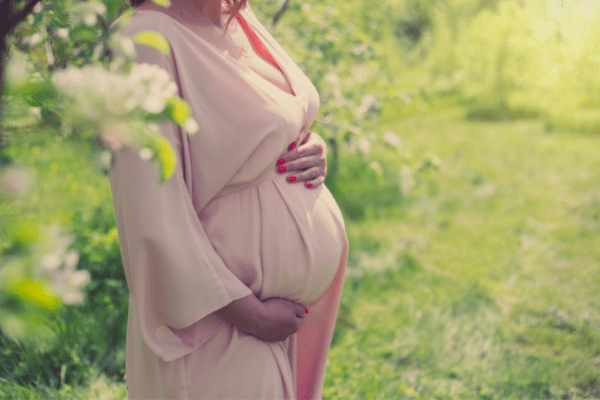
Risks and measures for pregnancy and childbirth over 42
Ability to conceive and give birth
Over 42 years of age, not only are the chances of conceiving increasingly reduced, but the chances of having a disability or Down syndrome are also increased: the chances of conceiving over 42 years of age are estimated to be less than 5%, so getting through the narrow gate successfully will be an important battleground.
Probability of the baby having a disability
The probability of a baby being born with a disability as a result of giving birth over the age of 42 is 1/42*.
At 42 and over, the chances of having a disability are high; at 49, the odds jump to 1/8*, so if you have decided to have a baby at an older age, you need to bear in mind that the chances of having some kind of disability are high and take precautions.
Probability of Down syndrome
The probability of a baby being born with Down syndrome as a result of an older birth at age 42 or over is more than 1/64*.
Of course, as you get older, being over 42 years of age, you should be prepared for a reasonable risk, as it increases progressively to 1/50, 1/38, 1/30, 1/23, 1/18, 1/14 and 1/11* as you get older.
Countermeasure
Even if you are over 42 years of age, your chances of conceiving are not zero, so it is essential to take measures to increase your chances as much as possible. Keep in mind your daily diet, lifestyle and exercise routine, and do whatever you can to follow your doctor’s instructions.
* Source: Ministry of Health, Labour and Welfare – Report of the Study Group on the Specific Treatment Support Services for People Suffering from Infertility and Other Issues
Facts about very old pregnancies and births
One of the reasons behind the occurrence of very old pregnancies and births is women’s later marriages and entry into society. Of course, there is nothing wrong with women entering the workforce, but many working women are often worried about what to do in the future because their marriageable age coincides with the time of their career advancement.
It is harder than you might imagine to balance both, and in many cases, even if you want to prioritise childbirth, you may not be able to get pregnant because you don’t want to take time off work. The combination of these factors may lead to an increase in very old pregnancies and births.
What are the benefits of older childbearing?
Although there are risks associated with older childbearing, there are many benefits. First, being older gives you more mental space. It also makes it easier to have financial freedom, which is a major factor in creating a calm environment for raising children.
Although older childbirth is certainly more difficult, there are certain advantages, so there is no need to give up just because you are older.
What to prepare for and be aware of in preparation for an older birth
Things to prepare for and be aware of in preparation for an older childbirth include eating a well-balanced diet, maintaining a regular lifestyle and taking moderate exercise. It is particularly important to create a stress-free environment, as autonomic nervous system disturbances can lead to a decrease in the production of female hormones.
Go to bed early at night to maintain a regular rhythm in your life and reduce the burden of work and housework as much as possible.
Find out about Down syndrome
What is Down syndrome (21 trisomy)?
Down syndrome refers to a condition also known as ’21 trisomy’ because there are three more chromosomes in the 21st chromosome instead of two. It is known that most of the causes of this chromosomal abnormality originate from the mother, and that the risk of Down syndrome increases as the mother gets older.
What are the symptoms that occur with Down syndrome?
Down syndrome has some common features in terms of appearance, such as hanging eyes, a less undulating face and smaller ears, as well as a soft body due to low muscle tone and a higher susceptibility to various complications, including heart and digestive disorders.
- Distinctive appearance (e.g. hanging eyes, small ears)
- Mental retardation
- Microcephaly
- Short stature
- Deafness
- Astigmatism and farsightedness
- Cardiac malformation
- Complications such as hypothyroidism
While heart disease is often asymptomatic, congenital heart malformations often occur. Depending on the degree, symptoms may include inability to breathe properly, inability to drink milk/breast milk properly and difficulty in gaining weight.
As they grow up, they can develop a variety of diseases, but not all people with Down syndrome develop complications, and the majority of them reach adulthood. Life expectancy is also increasing, with many people living into their 70s and 80s.
Down syndrome does not equal life-threatening, and many deformities and more can be treated with surgery, and education is also said to be able to enhance the ability to deal with the condition at an early stage.
Everyone has the potential to have Down syndrome
Down syndrome is a chromosomal abnormality and does not develop as the foetus grows larger in the tummy. It is therefore not possible to prevent Down syndrome in advance.
However, it is possible to find out whether a baby has Down syndrome before birth: by undergoing NIPT, multiple chromosomal abnormalities, including Down syndrome (21 trisomy), can be detected before birth.
Unlike the amniotic fluid test, NIPT only requires a blood sample and is very safe, but it is a ‘non-confirmatory’ test with inconclusive results. If it is positive, you will need to undergo further tests to clarify whether it is indeed positive (whether you have the disease or not), and if it is negative, there is a 99.9% chance that it is negative (you do not have the disease).
And while there are various advantages to knowing in advance whether your child is going to be born with Down syndrome, there are also disadvantages that should never be underestimated.
About Down syndrome and NIPT
The chance that the baby in her tummy will have Down syndrome, the overall incidence for all babies born is about 1 in 700. However, the risk increases with the age of the pregnant woman, especially after the age of 35, when the incidence is less than 1 in 300.
Purpose of undergoing NIPT ‘mental preparation’
Down syndrome and other chromosomal abnormalities in babies can be ascertained through NIPT. The purpose of this test is not to sort out life, but to learn about the baby and prepare the parents for a slow acceptance.
However, the ageing of births makes it difficult to think about and support the child when he or she is older, often leading to a tearful decision to part with the child.
Furthermore, even if NIPT can tell whether the child has Down syndrome, a decision must then be made in a very short time – NIPT can be taken once the pregnancy has been confirmed by an ultrasound scan, but before 22 weeks of pregnancy if an abortion is to be performed.
It may also take one to two weeks to get the results of NIPT, and can take up to three weeks longer, which may further reduce the time to make a decision.
While NIPT is a test with the advantage that the burden on the mother is very low and it is easier to undergo than an amniotic fluid test, it is also important to know the disadvantage that the psychological burden on the pregnant woman is greater.
For this reason, those considering undergoing NIPT are advised to undergo the test at a certified centre and to receive appropriate counselling.
Let’s have a proper awareness of NIPT testing
Many people feel a great deal of emotional strain from the early stages of pregnancy when they learn that their own age increases the likelihood of having a baby with Down syndrome.
However, NIPT is not taken to reduce such a burden or to provide relief, but as a preparation for parents to discuss how they will welcome their baby, provide support and work with the hospital.
We know that the chance of having a baby with Down syndrome increases with maternal age, but even if you give birth at a young age, the chances of this happening are never zero. Because Down syndrome and other chromosomal abnormalities can occur at any age of birth, parents need to be aware of and face pregnancy, childbirth and childcare together first.
Even if their child has a disability, it is still their child, and they should definitely share their thoughts on how they will proceed depending on the results of the NIPT, as well as before the NIPT and even before the pregnancy.
There are also many non-certified NIPT facilities across the country that do not offer counselling or other support, and where only blood samples are taken for testing. Many people use non-certified facilities because there are not enough certified facilities in the country.
However, it is also important to realise that the advantages and disadvantages of the test must be taken into account.
Be aware that NIPT is not just a test to reveal chromosomal abnormalities such as Down syndrome, and that parents should face any results and make a decision together, and have a correct understanding of NIPT and take the test to avoid any regrets.
Summary
Older mothers may be concerned about the health of the mother and other aspects of childbirth, but even if you are able to conceive successfully, you may still be concerned about the condition of the baby. Why not undergo NIPT to find out more about your baby’s condition?
【References】
- Ministry of Health, Labour and Welfare – Report of the Study Group on the Specific Treatment Support Services for People Suffering from Infertility and Other Issues
- omron – Pregnancy and childbirth Q&A
- コトバンク – What are the current status and risks of older childbearing?
Explore the latest insights on childbirth at an older age, disability risks, and Down syndrome risks at Hiro Clinic. Our content is supervised by doctors to provide up-to-date information and effective countermeasures.
Article Editorial Supervisor

Dr Hiroshi Oka
NIPT specialist clinic, MD
Graduated from Keio University, School of Medicine
 中文
中文





